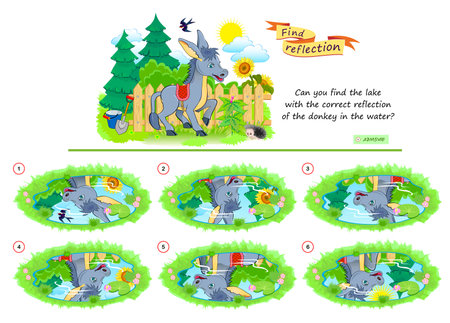Introduction to British Allotments
Allotment gardening is woven deeply into the fabric of British life, representing not only a practical solution to growing fresh produce but also a cherished cultural tradition. Originating from the need to provide working-class families with land for food cultivation during the Industrial Revolution, allotments have evolved into vibrant community spaces found across towns and cities in the UK. Each plot tells a story of resilience, camaraderie, and ingenuity, reflecting generations of gardeners who have shaped these spaces through both hardship and celebration. In recent decades, the importance of organic practices within allotments has grown significantly, as gardeners increasingly recognise the value of working in harmony with nature. Organic methods are viewed not merely as a trend but as a necessary response to environmental concerns and a commitment to sustainable living. Today’s allotments serve as living laboratories where traditional wisdom meets modern innovation, offering both seasoned and novice growers an opportunity to balance age-old practices with contemporary organic techniques in pursuit of healthy soil, robust crops, and thriving communities.
Traditional Organic Techniques Used in Allotments
British allotments have a rich heritage of organic gardening, with many plot holders favouring time-tested methods over synthetic inputs. Embracing these traditional techniques not only preserves soil health but also fosters a sense of community and continuity with past generations. Below, we explore three cornerstone practices: companion planting, crop rotation, and manual composting.
Companion Planting
Companion planting is the thoughtful pairing of plants to enhance growth, deter pests, or boost yields naturally. British allotmenteers often interplant onions with carrots to ward off carrot fly, or marigolds alongside tomatoes to repel aphids. This method reduces the need for chemical pesticides and encourages biodiversity within the plot.
Crop Rotation
This practice involves systematically changing the location of plant families each season to prevent soil-borne diseases and nutrient depletion. A classic four-bed rotation might look like the following:
| Year | Bed 1 | Bed 2 | Bed 3 | Bed 4 |
|---|---|---|---|---|
| 1 | Legumes (peas, beans) | Brassicas (cabbage, broccoli) | Root crops (carrots, beets) | Potatoes/Solanaceae |
| 2 | Brassicas | Root crops | Potatoes/Solanaceae | Legumes |
| 3 | Root crops | Potatoes/Solanaceae | Legumes | Brassicas |
| 4 | Potatoes/Solanaceae | Legumes | Brassicas | Root crops |
This structured approach helps maintain fertility and disrupts cycles of pests and diseases—an essential for long-term organic success on British allotments.
Manual Composting
The art of composting is central to traditional allotment culture. Most British gardeners maintain a compost heap or bin at the end of their plots, regularly turning kitchen scraps, lawn clippings, and prunings into rich humus. Not only does this reduce waste sent to landfill, but it also returns valuable nutrients to the soil without reliance on commercial fertilisers.
The Value of Tradition in Modern Times
The enduring popularity of these traditional organic methods among British allotmenteers speaks to their reliability and adaptability. While newer technologies offer convenience, many plot holders find satisfaction in hands-on practices that connect them to both the land and a broader community of growers. These techniques remain integral as gardeners seek to balance tradition with innovation.

3. Modern Innovations in Organic Allotment Gardening
The landscape of British allotments is evolving as gardeners increasingly embrace modern organic techniques alongside time-honoured traditions. Among the most noteworthy innovations is no-dig gardening, a method that has gained significant traction across the UK. By layering compost and organic matter directly onto the soil surface, this technique minimises soil disturbance, fosters beneficial microbial activity, and helps retain moisture—a real boon during unpredictable British summers. Many plot holders report fewer weeds and healthier crops, making no-dig an attractive proposition for those seeking efficiency without sacrificing sustainability.
Another contemporary approach gaining ground is integrated pest management (IPM). Rather than relying on blanket treatments, IPM encourages close observation and targeted responses to pest issues. This might include introducing natural predators like ladybirds or lacewings, using physical barriers such as netting against cabbage white butterflies, or employing companion planting strategies—growing marigolds to deter aphids, for example. These methods align well with the British ethos of working in harmony with nature and are increasingly favoured over chemical interventions.
The use of organic-certified products is also becoming standard practice on many UK allotments. Gardeners are now more aware of the importance of choosing fertilisers, soil conditioners, and pest controls that bear the Soil Association or OF&G certification marks. Such products provide reassurance that their use supports wider environmental goals and complies with strict organic standards recognised across Britain.
While these innovations represent a shift towards modernity, they do not erase traditional knowledge but rather complement it. The thoughtful integration of new methods ensures that British allotment gardening remains both forward-thinking and deeply rooted in local experience—a balance that continues to define the nations unique approach to growing food organically.
4. Challenges in Combining Old and New Methods
Integrating traditional and modern organic methods on British allotments is not always straightforward. While the idea of blending time-tested techniques with contemporary innovations sounds ideal, there are both practical and cultural barriers that plot-holders regularly encounter.
Practical Barriers to Integration
Accessibility is a significant issue. Many modern organic techniques—such as soil testing kits, digital irrigation timers, or advanced composting systems—require investment and technical know-how. Traditional methods, by contrast, often rely on local knowledge and materials readily available at hand, such as homemade compost or companion planting using familiar crops. This difference can create a gap in accessibility for some allotment holders, particularly older generations who may be less comfortable with new technology or those with limited financial resources.
Cultural Skepticism and Attitudes
There is also a cultural component to consider. Allotment communities are often rooted in tradition, with certain practices passed down over decades. Introducing new methods can sometimes be met with scepticism or resistance, especially if these innovations appear to contradict established wisdom. For example, no-dig gardening—a modern organic approach—is still viewed warily by some who have always relied on regular digging to control weeds and aerate the soil.
Comparison of Common Barriers
| Barrier | Description | Impact on Allotment Holders |
|---|---|---|
| Accessibility | Cost and complexity of new tools and resources | May exclude those with limited means or technical confidence |
| Skepticism | Reluctance to abandon traditional practices | Slows adoption of proven modern techniques |
| Resource Availability | Lack of access to reliable information or supplies | Prevents effective integration of both approaches |
Navigating Limited Resources
The availability of reliable resources—both physical and informational—is another hurdle. Some allotment holders struggle to find trustworthy guidance on how best to integrate new organic methods without undermining what already works well for them. Additionally, access to specialised seeds, soil amendments, or eco-friendly pest controls can be inconsistent across different regions in the UK.
Together, these challenges mean that finding the right balance between traditional wisdom and modern organic practices requires patience, open-mindedness, and often a willingness to experiment within the unique context of each British allotment community.
5. Case Studies: Allotment Holders’ Experiences
Across the UK, allotment holders are experimenting with a blend of traditional and modern organic practices, each bringing their own unique spin to this balancing act. Below are a few real-life examples that illustrate how British gardeners are navigating this evolving landscape.
Old Meets New in Northumberland
Margaret, an allotmenteer in Northumberland, relies on time-honoured crop rotation and companion planting, but she supplements these with soil testing kits and homemade compost tea. Her approach is rooted in tradition—she still sows broad beans on St Valentine’s Day—but she’s open to using new tools for monitoring soil health. Margaret’s main lesson is that embracing select innovations doesn’t diminish the value of inherited wisdom; instead, it enhances her yields and reduces pest problems without resorting to synthetic chemicals.
Tech Trials in South London
In South London, Ajay decided to try smartphone apps for watering schedules and pest identification alongside his father’s handed-down methods of mulching and manual weeding. While the tech helped him keep better records, he found some advice was too generic for local conditions. Ajay learned that digital solutions are best used as supplementary aids rather than replacements for hands-on observation and neighbourly chats about what works in Southwark’s unique microclimate.
Cotswold Community Collaboration
A community plot in the Cotswolds adopted a shared approach: combining no-dig beds (a modern favourite) with heritage seed varieties swapped at local seed exchanges. The group faced challenges adapting no-dig to clay-heavy soils but found success by tweaking bed depths and using locally-sourced straw mulch. Their key takeaway was the importance of flexibility—being willing to adjust both traditional and modern practices depending on site-specific needs.
Lessons Learned
- Select technology judiciously—avoid over-reliance on digital tools.
- Value local knowledge; seasoned allotmenteers often have insights that apps or books can’t provide.
- Adaptation is essential; what works in one region or season may not suit another.
Best Practices
- Blend established organic methods with new approaches through small-scale trials before widespread adoption.
- Foster community dialogue to share successes and failures honestly.
- Prioritise sustainability by choosing low-impact solutions suited to local contexts.
This mix of experiences demonstrates that British allotment gardening thrives where old wisdom meets thoughtful innovation—and where every plot holder remains open to learning from both past and present.
6. Conclusion: Towards a Sustainable Allotment Future
Reflecting on the journey of balancing traditional and modern organic methods in British allotments, it is clear that adaptability is at the heart of sustainable gardening. No single approach can claim absolute superiority; rather, it is the thoughtful integration of time-honoured practices and contemporary innovations that allows gardeners to respond effectively to the unique challenges of UK climate, soil, and biodiversity. Embracing this balance ensures not only healthier plots but also nurtures an environment where experimentation and learning are encouraged.
The role of community cannot be overstated in this evolving practice. Allotment sites across the UK have long thrived on shared knowledge, collective problem-solving, and mutual support. As gardeners exchange seeds, stories, and solutions—whether discussing composting techniques over a cuppa or organising workshops on no-dig beds—they reinforce a culture of continuous improvement. This sense of camaraderie empowers individuals to try new methods while respecting local traditions and ecological limits.
Looking ahead, the future of organic allotment gardening in Britain rests on our willingness to remain open-minded and collaborative. By drawing from both the wisdom of previous generations and the advances of modern horticulture, we can create thriving green spaces that nourish people, wildlife, and communities alike. Ultimately, this dynamic balance is what will keep British allotments resilient—and deeply rewarding—for years to come.


